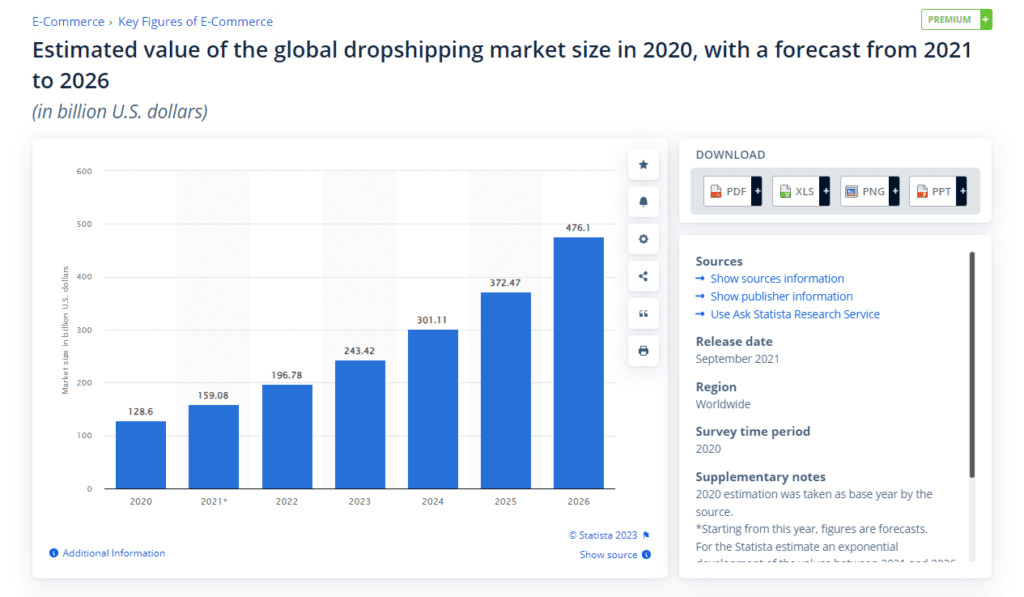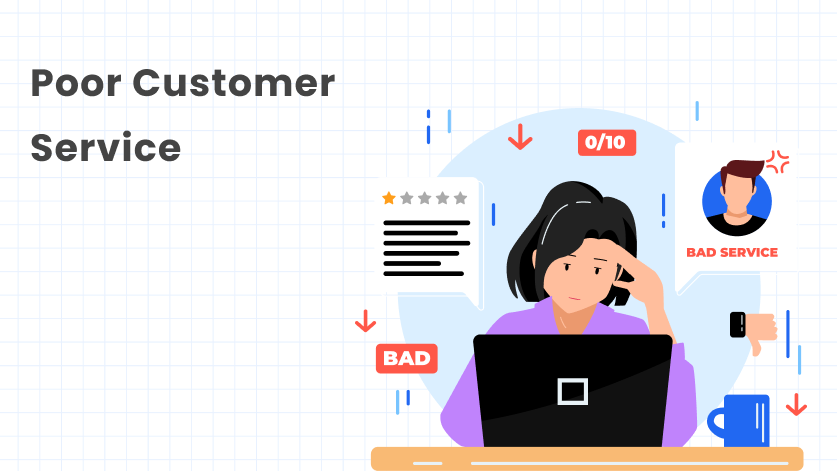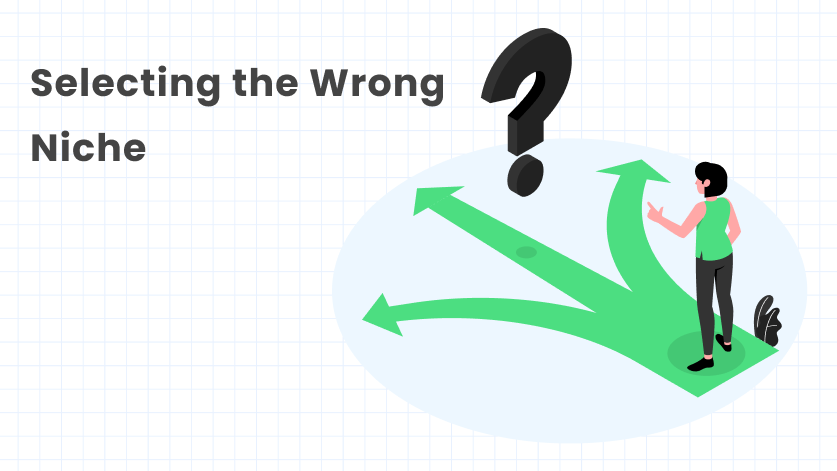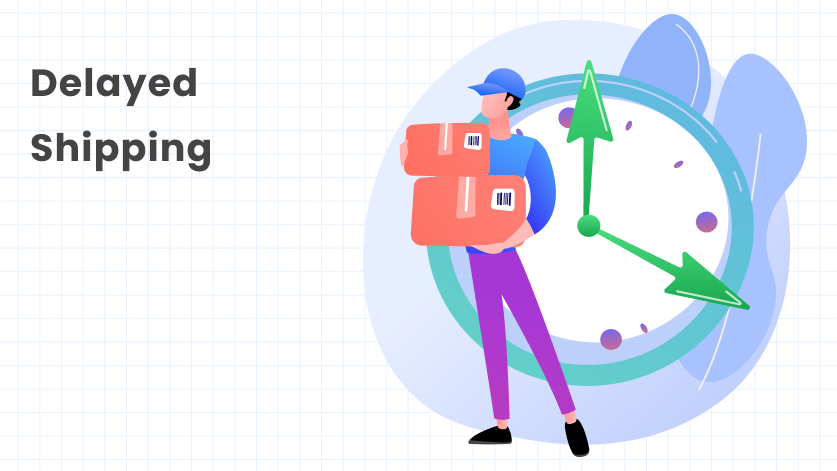Dropshipping, a popular eCommerce business model, has grown in popularity in recent years, but one crucial question remains: What is the dropshipping success rate of eCommerce stores?
As the eCommerce business continues to evolve, understanding the reasons behind a dropshipping business failure is crucial for online business owners and entrepreneurs.
Throughout this blog post, we’ll also introduce you to essential tools and resources, ranging from analytics and tracking tools to marketing automation platforms, that can improve your Shopify dropshipping journey.
According to the latest data from Statista, the global dropshipping market is forecast to reach $301.11 billion in 2024. This is also the first year it has surpassed $300 billion, after a 23.7% increase from 2023’s numbers.

That’s not all—this figure is projected to continue rising in the coming years, with the data pointing toward a continued and rapid increase. The dropshipping market size is set for further growth, hitting $301.11 billion in 2024 and $372.47 billion in 2025.
Experts predict that by 2026, the dropshipping market size will be worth as much as $476.1 billion. To put things in perspective, this is more than 3.5 times its value in 2020 and an impressive $347.5 billion of growth in just a matter of six years.
From 2020 to 2026, the average annual growth rate of the dropshipping market size is expected to be 24.39%. The biggest increase will come in 2026, when it’s forecast to rise by 27.82%. Until then, from 2020 to 2025, the dropshipping market is expected to grow by 23.7%.
In this article, we’ll explore the dropshipping success rate and the reasons behind the failures of dropshipping stores.
What is a Dropshipping Business?
Dropshipping is a way of selling products without keeping them in stock. Instead of storing and handling inventory, a store buys products from a third party, like a wholesaler or manufacturer, and has them directly shipped to the customer. This makes the seller a middleman in the process.
The key benefits of dropshipping are:
1. Low Start-Up Costs: Starting a dropshipping business doesn’t require a lot of upfront money. Since you don’t need to keep inventory, you won’t tie up your funds for products.
2. Low Risk: There’s minimal risk in starting a dropshipping business because you only order products from your supplier when they’re sold. This means you won’t end up with unsold inventory.
3. Flexibility: You can operate a dropshipping business from anywhere in the world. Plus, you have the freedom to sell any type of product you’re interested in.
4. Scalability Made Easy: As your business grows, you can easily scale your eCommerce business operation. Simply add more products to your store and partner with additional suppliers to meet the increasing demand.
What is a Dropshipping Success Rate:
The success rate of dropshipping businesses can vary widely, as it depends on various factors such as the niche of the products, marketing strategies, and the ability to adapt to market trends.
There isn’t a fixed success rate for dropshipping, and success is subjective, as it can mean different things to different people.
According to industry experts, the dropshipping success rate of eCommerce stores is around 10% to 20%. This means that out of every 100 businesses that use Shopify for dropshipping, only 10 to 20 of them are successful.
Top 10 Reasons Why Dropshipping Business Fails:
Dropshipping can be a great way to start an online business, but it’s not without its challenges. In fact, studies suggest that the success rate for dropshipping businesses is relatively low.
Here are some of the top 10 reasons why dropshipping businesses fail:
1. Selecting the Wrong Dropshipping Supplier:
Selecting the right dropshipping supplier is a critical aspect of running a successful dropshipping business, and choosing the wrong one can have detrimental consequences.
One significant concern is product quality; if the supplier provides subpar products, it can lead to customer dissatisfaction, returns, and negative reviews, damaging the business’s reputation.
Another issue is reliability; an unreliable supplier may fail to consistently fulfill orders on time, resulting in delayed shipments and stockouts.
Effective communication is crucial, and difficulties in this area can lead to misunderstandings, order errors, and a lack of transparency.
Pricing and profit margins are also impacted, as some suppliers may not offer competitive pricing or may have high minimum order requirements.
2. Doing Little Research:

Starting a dropshipping business without market research is like building a house on sand. You need to understand your target audience, competitor landscape, and product viability before investing any resources.
Choosing trendy products without considering their long-term viability is another disaster. You might see initial hype, but soon you will find yourself stuck with unsold merchandise.
Setting a price is a delicate dance. Overprice, and you deter potential buyers. Underprice, and you miss out on profit opportunities. To find the sweet spot, research your market, understand your value, and price strategically.
The good news is that you can avoid these pitfalls by investing in research. Dive deep into your target audience, analyze your niche, and scrutinize potential products before committing.
Remember, research is an ongoing journey, not a one-time destination. By making it a constant companion, you’ll equip yourself with the knowledge and foresight needed to navigate the dropshipping seas and chart a course toward success.
3. Starting Out with Too Many Products:

Many new dropshippers get overwhelmed by the variety of products available and try to offer everything to everyone. Instead, focus on a niche where you can build expertise and offer a select range of relevant products.
Choose products that align with your brand identity and resonate with your target audience, even if it means limiting your product selection. It is preferable to be a master of a few things rather than being average at many.
Analyze the data to understand which products are performing well and which are dragging you down. Regularly prune your inventory and replace underperforming items with promising new options.
4. Poor Customer Service:

Customer service is the invisible thread that connects a business to its customers. But in dropshipping, where direct control over the product’s journey is limited, poor customer service can be a gaping hole in that thread.
When customer service is lacking, it often leads to delayed responses to inquiries, unaddressed concerns, and general dissatisfaction among customers.
Timely and helpful communication is essential in addressing order issues, providing product information, and handling returns or refunds. Failing to prioritize customer service can result in negative reviews, eroding the trust that customers place in the business.
Train your customer service team to handle issues effectively with empathy and knowledge. They are the frontline ambassadors of your brand, so equip them with the tools and information to shine.
Dropshipping businesses should prioritize building a responsive and supportive customer service system to foster positive relationships, enhance brand reputation, and ultimately contribute to long-term success.
5. Selecting the Wrong Niche:

Selecting the wrong niche is a critical mistake that can significantly impact the viability and success of a dropshipping business. Understanding the target audience within the chosen niche is crucial.
The niche represents the specific market segment or industry in which a business operates. Choosing a niche without thorough research and consideration can lead to a number of problems.
First and foremost, selecting a niche with limited demand or oversaturation can result in a lack of customer interest and, consequently, low sales.
On the other hand, entering a highly competitive niche without a unique selling proposition (USP) can make it difficult for the dropshipping business to distinguish itself from other market players.
Failure to align with the preferences, needs, and behaviors of the target audience can lead to ineffective marketing strategies and missed opportunities.
Moreover, selecting a niche with products that have low profit margins or high shipping costs can impact the financial viability of the business.
Choosing a niche that aligns with the dropshipper’s interests and expertise can contribute to a deeper understanding of the market and enhance the overall business strategy.
In short, selecting the correct niche is foundational to the success of a dropshipping business, influencing customer engagement, increasing customer loyalty, profitability, and long-term sustainability.
6. Lack of Branding/Marketing:
A lack of branding and marketing is a significant challenge to the growth and success of a dropshipping business. Branding is about establishing a unique identity for the business, creating a distinct presence in the market, and fostering customer recognition.
Without a strong brand, a dropshipping store may struggle to differentiate itself from competitors, resulting in a lack of customer loyalty and diminished market impact.
Effective marketing is equally crucial for attracting and retaining customers. Failure to implement robust marketing strategies can lead to a lack of visibility, making it challenging for the dropshipping business to reach its target audience.
Insufficient marketing efforts may result in low website traffic, lower conversion rates, and overall poor sales performance. To overcome these challenges, dropshipping businesses need to invest in branding and marketing initiatives.
This includes creating a compelling brand identity, designing a professional and user-friendly website, and implementing various marketing channels such as social media, content marketing, and search engine optimization (SEO).
Building a brand story, highlighting unique selling propositions, and engaging with customers through various marketing channels contribute to a more memorable and impactful presence in the market.
Neglecting branding and marketing not only limits the potential for customer acquisition but also undermines the ability to establish a strong and recognizable brand in the competitive eCommerce landscape.
By prioritizing these elements, dropshipping businesses can improve their visibility, attract a loyal customer base, and ultimately drive sustainable growth.
7. Choosing the Wrong Marketplace to Sell On:

Selecting the wrong marketplace to sell on is a critical mistake that can significantly impact dropshipping success rates.
Firstly, the wrong marketplace may not align with the target audience or the type of products being offered. Each marketplace caters to a specific audience, and failure to match the dropshipping business with the right platform can result in lower visibility and reduced sales.
Secondly, the fee structure and policies of different marketplaces are different. Choosing a platform with high fees or stringent regulations may eat into profit margins and constrain the flexibility of the business.
Thirdly, the level of competition varies across different marketplaces. Joining an overcrowded marketplace without a clear strategy for standing out can make it challenging to attract customers and compete effectively.
To reduce these risks, dropshipping businesses should conduct thorough research on potential marketplaces. This involves assessing the platform’s user base, fee structure, policies, and overall compatibility with the business model.
Popular marketplaces like Amazon or Walmart may offer broader exposure, but niche platforms can be advantageous for specific product categories.
Ultimately, the key is to align the chosen marketplace with the target audience, products, and business goals.
By making an informed decision about where to sell, dropshipping businesses can optimize their visibility, leverage the platform’s resources, and improve the overall success rate of dropshipping businesses.
8. Delayed Shipping:

Shipping delays are a common challenge to dropshipping success rates and can significantly impact customer satisfaction and the overall reputation of the business.
This issue arises when there are delays in fulfilling and delivering orders to customers, impacting the promised delivery times. Two factors can contribute to delayed shipping in the dropshipping model.
Firstly, reliance on suppliers who struggle with inventory management or have long processing times can lead to delays.
Secondly, geographical distances between the supplier, the dropshipping business, and the customer can contribute to shipping delays.
The impact of delayed shipping on the business is significant. Customers may become frustrated, leading to negative reviews, decreased customer satisfaction, and the potential loss of future business.
9. Lack of Control Over Products:
Dropshipping businesses rely on external suppliers for manufacturing, packaging, and shipping. This lack of control can lead to unforeseen challenges like quality issues or inventory discrepancies.
The lack of control over products is a notable challenge in the dropshipping model, stemming from the fact that the business does not physically handle or manage its inventory. This absence of direct control over the products being sold can have various implications.
Firstly, quality control becomes a potential issue. Since the dropshipper relies on third-party suppliers to fulfill and ship orders, there is a limited ability to inspect the products for quality before reaching the customer.
Secondly, inventory management is challenging due to the dependency on suppliers. Fluctuations in product availability, stockouts, or delayed shipments can occur without the direct involvement of the dropshipping business, impacting the ability to meet customer demand consistently.
Thirdly, the branding and packaging of products may not align with the dropshipper’s desired image. Since the business does not handle the products directly, it has limited control over how items are packaged, branded, or presented to customers, affecting the overall brand experience.
This lack of control over the physical products can result in poor product quality, dependency on suppliers, and branding and packaging of the products, which can lead to customer dissatisfaction and potential returns.
10. Lack of Patience:

The lack of patience represents a common pitfall in the dropshipping business, where entrepreneurs may expect immediate results and success. This impatience can manifest in several ways, impacting the overall sustainability and growth of the business.
Building a successful dropshipping business takes time, and expecting rapid profitability can lead to disappointment. Establishing a customer base, refining marketing strategies, and optimizing operations require patience and a long-term perspective.
Entrepreneurs may become discouraged if they do not see immediate sales or a substantial return on investment (ROI).
Impatience may lead to hasty decision-making. Entrepreneurs may be tempted to change strategies, switch products, or abandon the business altogether if results are not instantaneous.
Strategies for a Better Dropshipping Success Rate:
1. Thorough Market Research: Before diving into dropshipping, conduct comprehensive market research to identify viable niches and assess the competition. According to industry experts, around 42% of businesses fail due to a lack of market demand.
2. Optimize Website Design and User Experience: Invest in a visually appealing and user-friendly website. Studies show that a one-second delay in page load time can result in a 7% reduction in conversions.
3. Leverage Social Media Marketing: Harness the power of social media platforms to promote your dropshipping store. With over 3.6 billion monthly active users on social media, platforms like Instagram and Facebook provide a vast audience.
4. Implement Effective SEO Strategies: Optimize your website for search engines to improve visibility and attract organic traffic. Research indicates that the first page of Google captures over 71% of search traffic. Utilize relevant keywords, optimize product descriptions, and invest in quality backlinks to enhance your website’s SEO performance.
5. Establish Reliable Supplier Relationships: Partner with trustworthy suppliers to ensure timely order fulfillment and customer satisfaction. Shipping delays are a significant concern for dropshipping success rates, and having reliable suppliers can mitigate this issue.
6. Provide Exceptional Customer Support: Prioritize excellent customer service to build trust and loyalty. Research reveals that 73% of consumers are willing to spend more on a brand with excellent customer service. Implement efficient communication channels, address queries promptly, and resolve issues to enhance the overall customer experience.
7. Utilize Email Marketing Effectively: Leverage email marketing campaigns to engage with your audience and increase sales. According to a recent study, email marketing has an average ROI of $42 for every $1 spent. Implement strategies such as personalized email campaigns to reduce cart abandonment rates and exclusive promotions to nurture leads and convert them into customers.
Conclusion:
In conclusion, the world of dropshipping presents both immense opportunities and significant challenges for aspiring eCommerce entrepreneurs.
Statista projects a remarkable growth trajectory for the global dropshipping market, reaching $301.11 billion in 2024 and potentially soaring to $476.1 billion by 2026.
The dropshipping success rate, as experts suggest, hovers around 10% to 20%, underscoring the importance of understanding and addressing the common factors that lead to failure.
Our exploration into the top 10 reasons behind dropshipping failures revealed crucial insights for both novice and experienced dropshippers. The significance of choosing the right supplier to start with too many products is that each factor contributes to the delicate balance required for sustained success.
One common thread among the challenges is the need for meticulous research and strategic decision-making. Whether it’s understanding market demand, selecting the right niche, or optimizing marketing efforts, a well-informed approach significantly improves the chances of success.
Moreover, there are strategies for improving dropshipping success rates. Thorough market research, optimizing website design, leveraging social media, implementing SEO strategies, establishing reliable supplier relationships, providing exceptional customer support, and utilizing email marketing effectively are key elements in the recipe for success.
Success in the dropshipping business is a process that requires continuous learning, adaptation to new market trends, and a steadfast commitment to providing value to customers.








